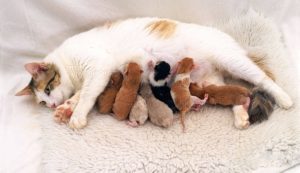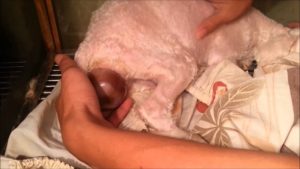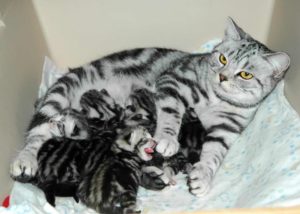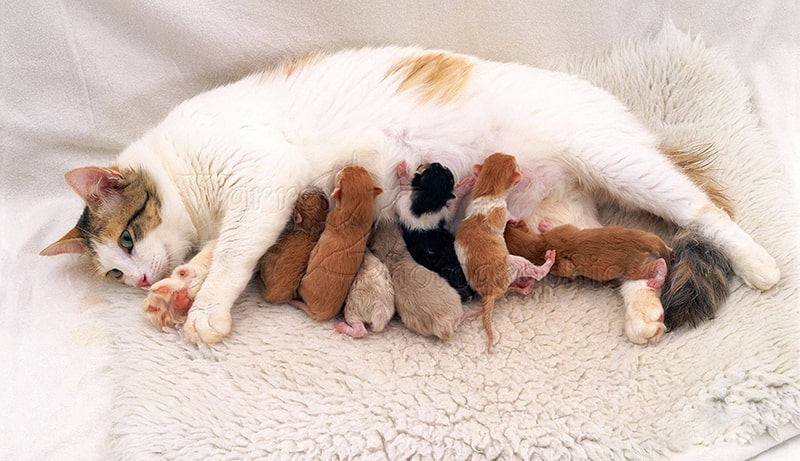As a cat owner, it is important to be aware of your furry friend’s pregnancy and birth process. One common question that arises during this time is how to know if a cat has given birth to all her kittens or if there are any remaining in her womb. This article aims to provide you with some easy-to-spot signs that indicate whether your cat has finished giving birth or not.

Signs of a cat giving birth to a baby are easy to spot
Cat panted
It is normal for a mother cat to pant heavily during labor and delivery. However, once the birthing process is complete, she should gradually become calmer and breathe normally. If your cat is still breathing heavily after giving birth to one or two kittens, it may mean that she still has more kittens to deliver.
Cats moan a lot
Cats can vocalize loudly during labor, and their cries can intensify as the birthing process progresses. Once all the kittens are born, however, the mother cat should become quieter and less vocal. If your cat continues to cry or meow excessively after giving birth to a few kittens, it may be a sign that she still has more kittens to deliver.
Cat pushing to give birth
When a cat is delivering a kitten, she will go through a stage of intense contractions and straining. Once the kitten is born, the contractions should ease up, and the mother cat should take a break before beginning the next delivery. If your cat continues to strain and push without any progress, it may mean that there is a kitten stuck in the birth canal.
There is a fluid-filled sac in the mother cat’s birth canal

After a kitten is born, the mother cat will expel the placenta, which is a sac of fluid and tissue that nourishes the developing kitten in the womb. If you notice multiple placentas being expelled, it can be a good indication that all the kittens have been delivered.
The cat licks its genital area
Mother cats instinctively clean their newborn kittens to remove any fluids or debris from their fur and skin. After the last kitten is born, the mother cat will focus her attention on cleaning herself, including her genital area. This behavior is a good sign that she has finished giving birth.
The placenta does not come out after the last kitten has given birth
After giving birth, the mother cat will continue to expel any remaining afterbirth. If you notice that the afterbirth has stopped coming out, it can indicate that all the kittens have been born.
Cats appear aggressive or highly defensive
If your cat is still restless and aggressive after giving birth to a few kittens, it may be a sign that she is uncomfortable and in pain. Cats in labor may also become fearful or defensive if they feel threatened. Try to create a calm and comfortable environment for your cat during the birthing process.
The mother cat is not completely focused on her newborn kittens
After giving birth, a mother cat will usually stay close to her litter, nursing and grooming them. If your cat seems disinterested in her kittens or is not spending as much time with them as she should, it may indicate that she is still in labor.
There is discharge from the cat’s birth canal
During the birthing process, it is normal for some discharge to be expelled from the mother cat’s birth canal. However, if you notice a persistent, foul-smelling discharge after all the kittens have been born, it may be a sign of an infection and requires veterinary attention.
Cats are not hungry
A healthy, nursing mother cat will usually have a strong appetite and need to eat frequently to produce enough milk for her litter. If your cat is not interested in food after giving birth, it may be a sign that she still has more kittens to deliver or that she is experiencing complications.
The number of kittens born is less than shown in the picture
If you are unsure whether your cat has finished giving birth, try counting the number of kittens you can see. If there are fewer kittens than you expected based on your cat’s pregnancy, it may indicate that there are more still to come.
Some notes when cats show signs of miscarriage

In some cases, a cat may experience dystocia, which is adifficult or prolonged labor that can result in the death of the mother and/or her kittens. If you notice any signs of dystocia, it is crucial to seek veterinary attention immediately.
Some signs of dystocia include:
- Restlessness and frequent changes in position
- Prolonged contractions without progress
- Green discharge from the vulva
- Foul-smelling discharge
- Weakness or lethargy
In cases of dystocia, your veterinarian may need to administer medications to help stimulate contractions, manually assist with the delivery, or perform a cesarean section to save the lives of the mother and her kittens.
It is also important to note that while cats can give birth to litters of up to 12 kittens, the average litter size is typically between 4 and 6 kittens. Therefore, if your cat gives birth to a smaller litter than expected, it may be within the normal range.
Overall, as a cat owner, it is essential to be aware of the signs that indicate whether your cat has finished giving birth or not. By observing your cat’s behavior and physical symptoms, you can ensure that she receives the necessary care and attention during this crucial time.
Conclusion
Knowing how to tell if a cat has given birth to all her kittens is an essential skill for any pet owner. By recognizing the common signs of labor and delivery, you can ensure that both the mother and her kittens receive proper care and attention.
Remember, if you have any concerns about your cat’s pregnancy or birthing process, don’t hesitate to consult with your veterinarian. They can provide invaluable guidance and support to help ensure a safe and successful delivery.
